Reliable Restorations – Workshop Update
We continue to be incredibly busy in the workshop. Servicing and upgrade work keeps flowing through, and we have been pleased to welcome many new customers to the Twyford Moors family. We have also been busy with test drives on sales cars and have been pleased to hand the keys of some lovely cars over to their new owners. More than anything, we have been really trying to push forward with some of our longer-term projects. We have several restorations nearing the end, ranging from being at the start-up stage through to final testing, and at the other end, we have a couple of bodyshells in the fabrication stages. Alongside these, we have a number of engine rebuilds working their way along the line and more waiting in the wings to get started.
A quick reminder that the Mike Hawthorn Memorial track day at Goodwood is coming up on the 3rd of July. I understand that there are just a couple of spaces left at the time of writing, so if you wish to take part, please do get in touch.
This update includes everything from a bit of SS100 history through to an XJS. There is an XK120 restoration reaching completion and several older restorations back in for servicing.

Jaguar XK120 Restoration
This Jaguar XK120 OTS (or Roadster) is coming towards the end of a full nut-and-bolt restoration. We have shared a few images of this car while it has been working its way through the process. It has just been trimmed and is now in the workshop for finishing touches. We always get the cars running and driving before they are trimmed. This allows us to deal with any mechanical issues without having to disturb the beautiful new upholstery.
Although the car looks very much finished, there is still a way to go before the keys can be handed over to the owner. Every aspect of these hand-built cars has to be checked and double-checked. The car will be test-driven, adjusted, and dialled in to get it running and driving as it should.
Once we are happy with the car, it is then handed over to the owner for some running-in miles. This lets the engine get fully bedded in and gives the owner the opportunity to get to know their car and come up with any adjustments they require. The car can then return to us for a final check-over, tighten up, and adjust anything that has settled, and final set-up of the engine.
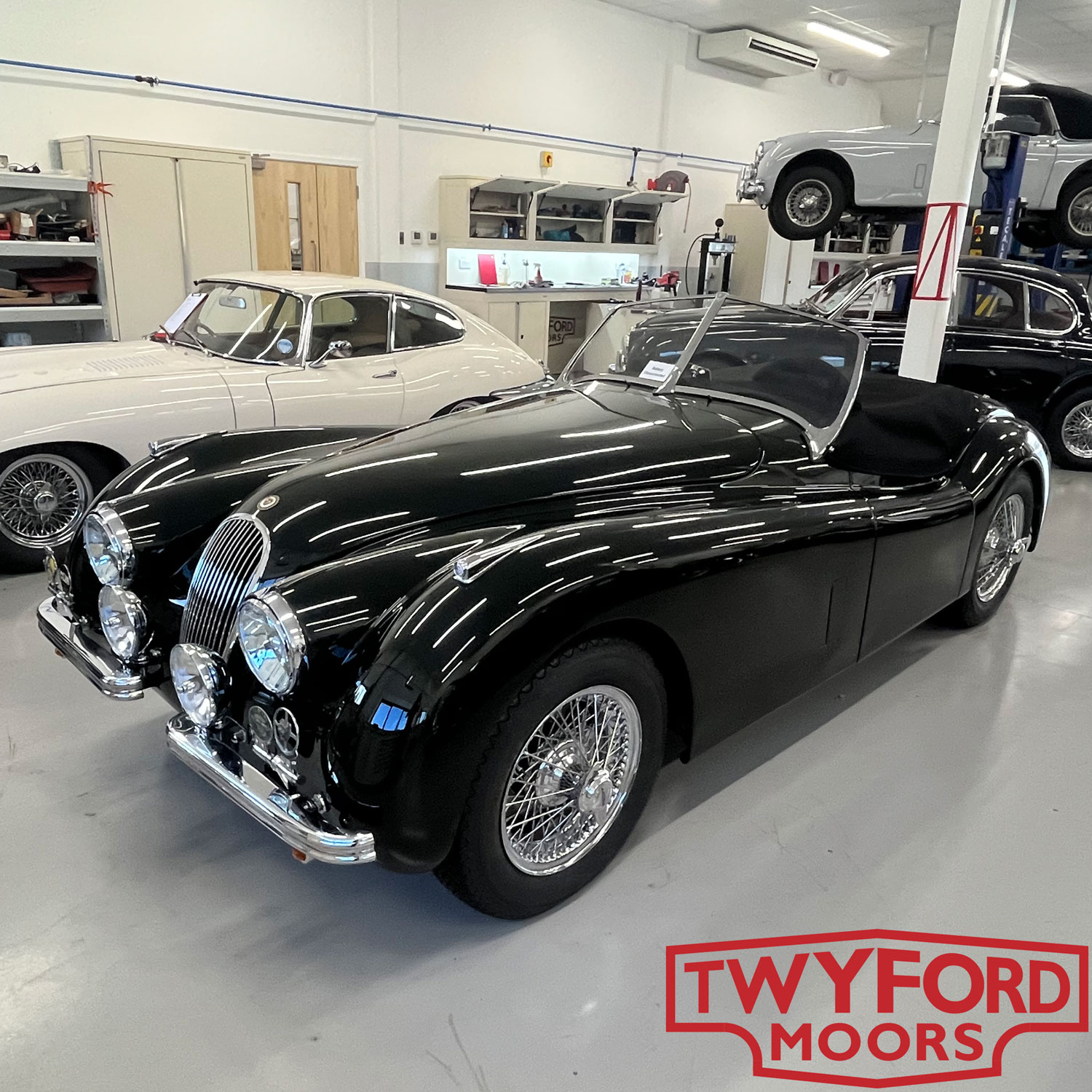
D-Day Tour
Pictured here is the bonnet of a rather nice MKII saloon which we look after. As you can see from the sticker, it has recently returned from Bespoke Rallies D-Day tour. This event looks like it was a very special trip marking the 80th anniversary of the D-Day landings. The cars crossed on the overnight ferry from Portsmouth before visiting Pegasus Bridge and then on to the landing beaches. Visits to Sword, Juno, Gold, and Omaha wrapped up the first day of the trip.
Day two started with driving to Utah Beach, the scene of the major American landing, and taking in the area around Cherbourg where the Hedgerow battle took place. The second day also included a regular competition around the Normandy backroads.
The final day of the trip visited more of the Normandy battlegrounds, including where some major tank battles took place. The trip finished in the beautiful and historic port town of Honfleur.
We focus on building cars which are enjoyable and reliable to use and have many years of experience in preparing cars for these kinds of events. If you are thinking of taking part in a tour or rally, please do get in touch to discuss pre-tour inspection and preparation.
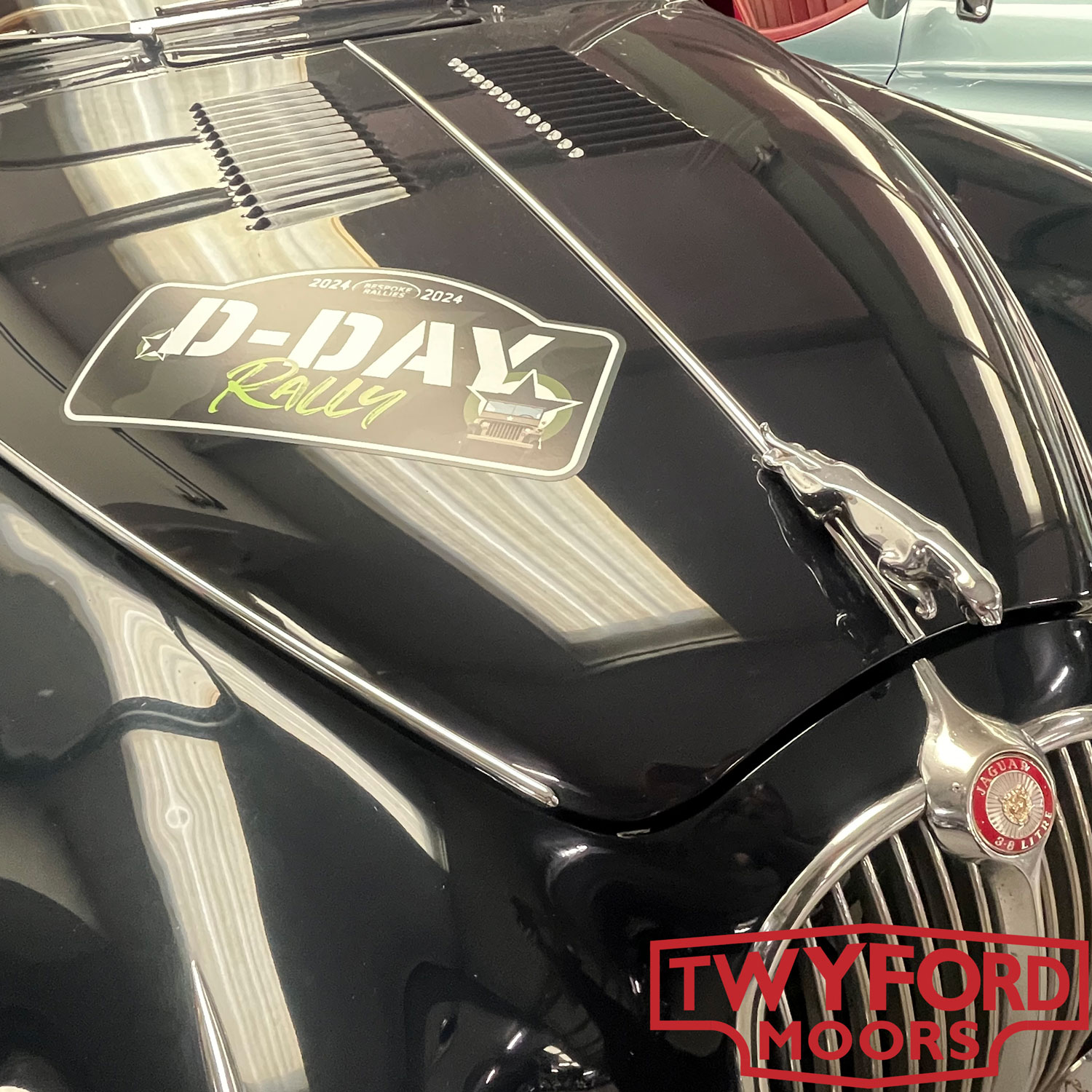
Jaguar XK Engine Rebuilds
We shared a photo of this engine test rig a few months ago as we were building it up. It is now complete, and we think it looks rather good in our brand colours. This setup provides an opportunity to test-run our engines before they are fitted into a car. We do not generally experience issues with our rebuilt engines; however, getting them in and out of a tight engine bay takes a lot of hours. A couple of hours spent setting it up on this rig can save a lot of time later if there is anything which requires further attention.
On test today is a 4.2-litre engine which started life in an XJ6. It has been rebuilt to a fast-road specification and will be fitted to a MKII saloon. This car has been built to a rather cool resto-mod specification with many upgrades besides this fantastic engine. The engine will be mated to a five-speed gearbox, making the car not just fast but also comfortable to drive over long distances. This has been a fun project to be involved in, and it promises to be even more fun to drive.
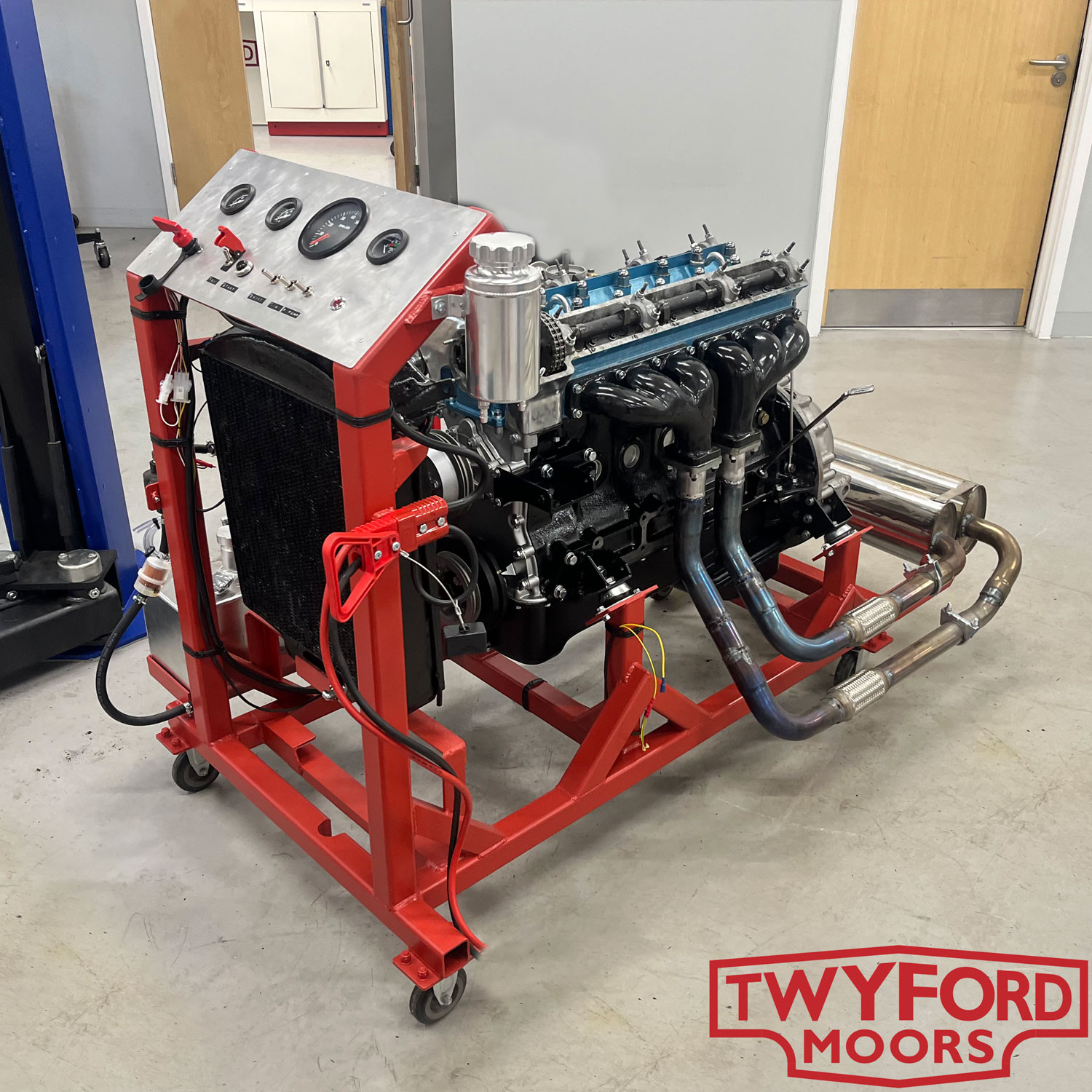
Three Generations of Jaguar Sports Cars
We rather enjoyed this glimpse of three generations of classic Jaguar sports cars all gracing our workshop, so thought we would share it. To the left is a Jaguar XK140 drophead coupe from 1955. Behind that is a Series 1 3.8 E-Type from 1963, and in the foreground is an XJS. All three of these cars are very different and show how much cars, and Jaguar as a company, evolved over the decades. Despite this, they all share something fundamental yet intangible that lets you know they are a Jaguar.
It could be the incredible and forward-thinking engineering, particularly in the XK140 and E-Type. It could be the unrivalled combination of comfort and speed Jaguar managed to consistently provide in their cars. It could be the smoothness of the six and twelve-cylinder engines. Maybe it’s the bold styling. What is for sure is that these cars stood out from the crowd when they were new and in 2024, they turn heads even more easily.
Can the same be said of modern cars? Is it just a case of waiting to see what ages with grace, or have we reached a point where there are no ‘future classics’? Let us know what you think.
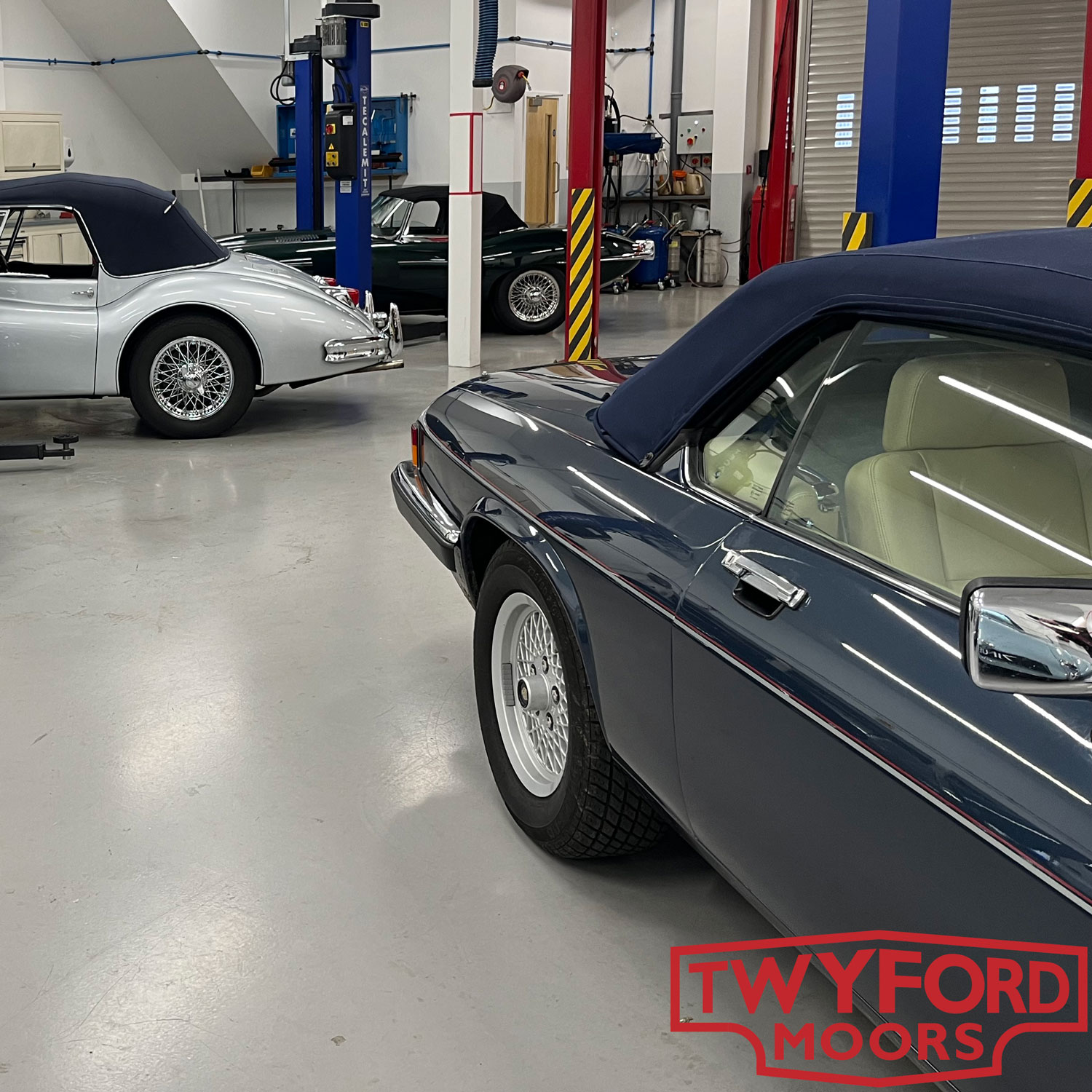
Check Your Tyres
We see a lot of tyre defects when checking over classic cars. The most common of these is excessively old tyres. Many classic cars cover fewer than 2000 miles a year, so they do not wear through the material of the tyre. Despite this, the rubber tyres are manufactured from will degrade with time. This can manifest in cracking in the tread or sidewalls, which in extreme circumstances can become splits. The rubber can also become hard, reducing the tyre's grip and flexibility. There are no hard and fast rules on the age of tyres. Many safety groups suggest that tyres should be replaced once they are five or six years old. We strongly recommend replacing tyres that are ten years or older. You can check the age of your tyres by looking at the date stamps on the sidewalls. At the same time, it is also worth looking for signs of age, such as cracked sidewalls.
Since the laws around MOT testing in the UK have changed, many classic cars are not being checked over professionally every year. This means that basic things like tyre wear are being missed. Do ensure you check the depth of tread right across your tyres to ensure your car is safe to drive.
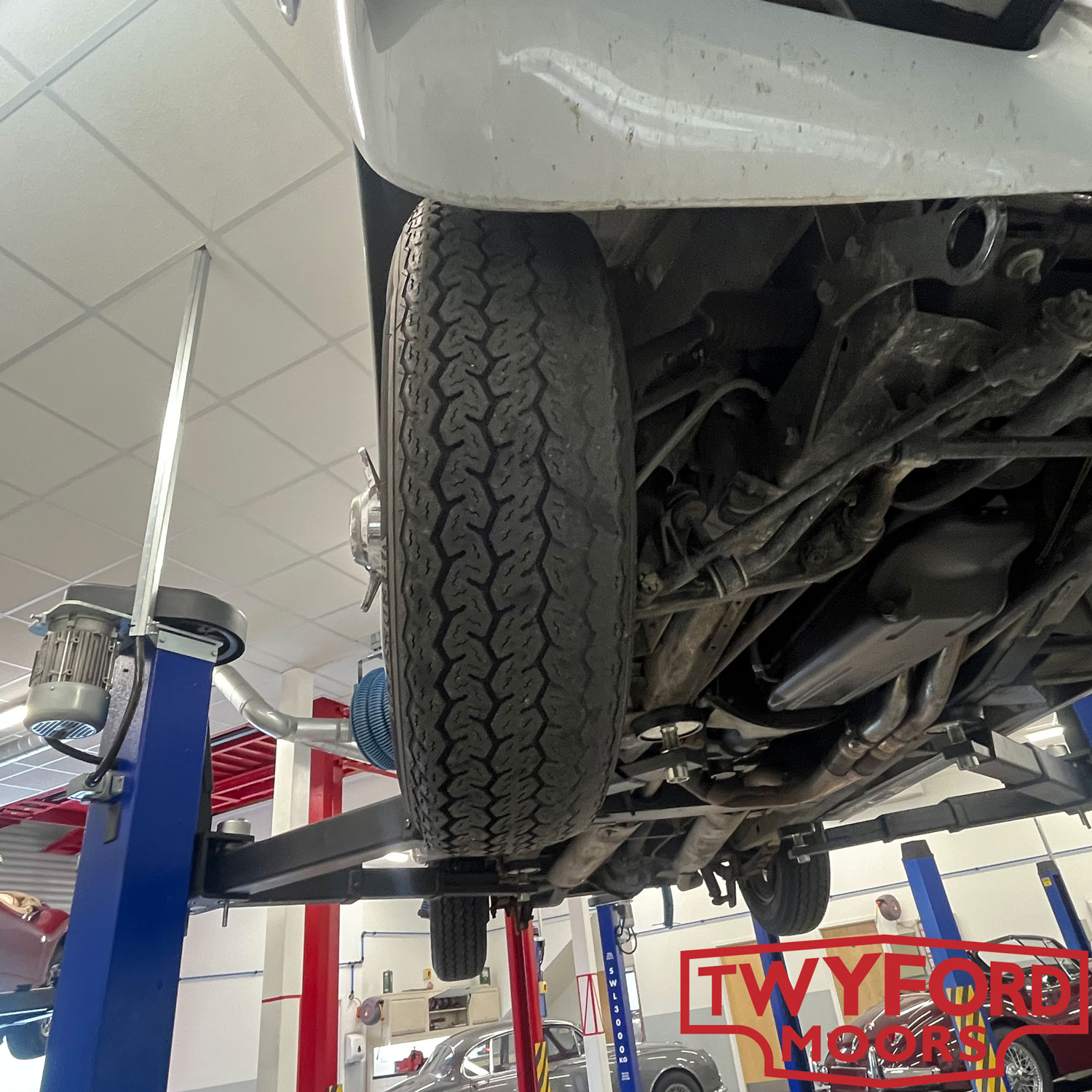
Jaguar XK140 Restorations
This pair of XK140 drophead coupes were parked out the front waiting to be collected recently. They were both restored here at Twyford Moors over fifteen years ago. It is so encouraging to see our restorations age so gracefully. Our focus is on building cars which can be used. Both of these cars have covered many thousands of miles in the UK and abroad. Indeed, the vast majority of our restorations are used for touring and cover many miles in all conditions. To that end, we put a lot of effort into protecting them from the elements in a way that they never were when new.
The techniques we use to protect the cars have evolved over the past couple of decades as we have learned more and technology has moved on, but the principles remain the same. When these cars were originally built, Jaguar only really painted where you could see, and if you were lucky, there might be a puff of paint in the cavities and bulkhead. When we restore a car, everywhere that can be reached is painted. Every cavity is waxed as we assemble the car, and once completed, the car is waxoyled to protect the chassis. These delightful cars are proof that these processes work and, with modern body stripping and protection processes, our latest generation of restorations should last even better.
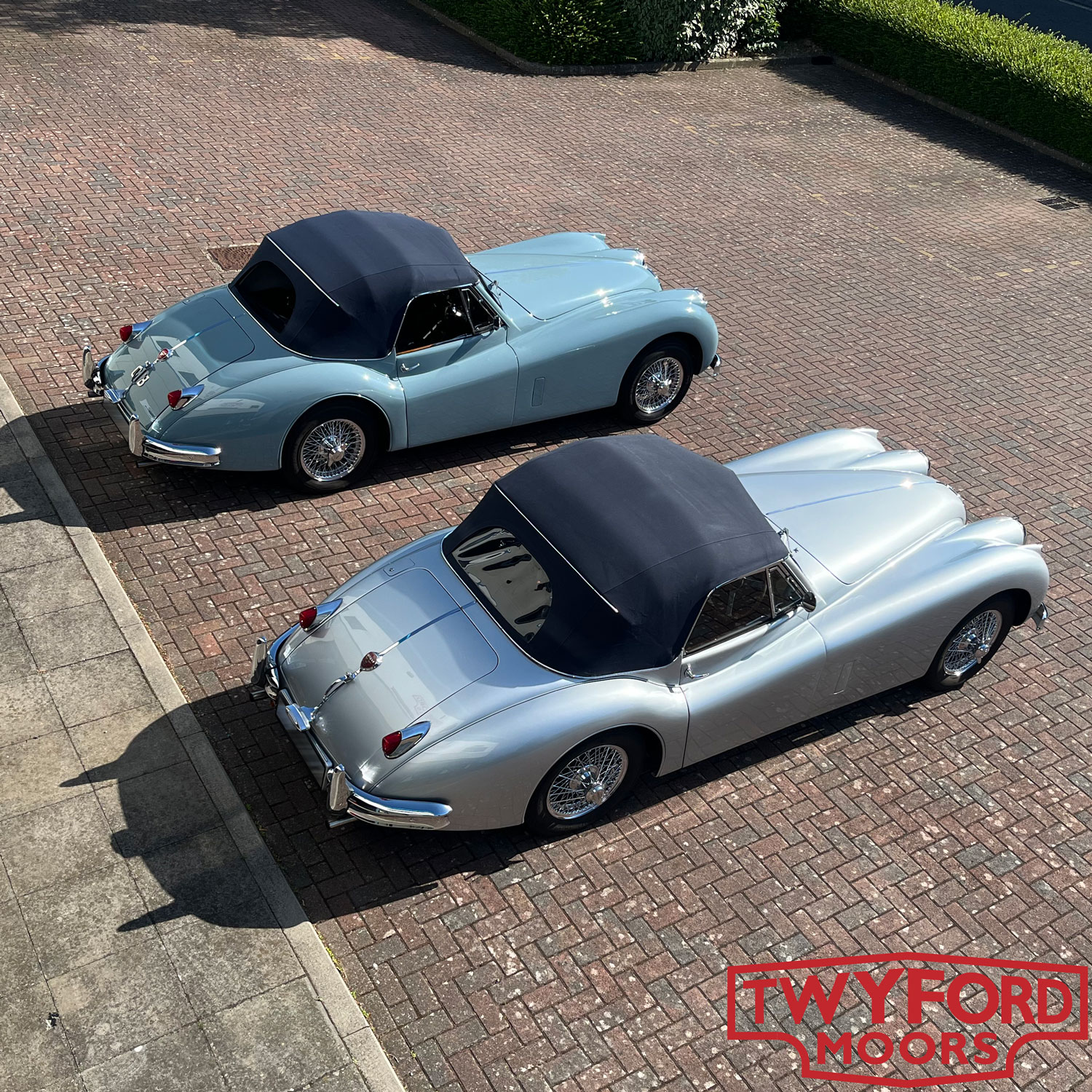
Jaguar E-Type Rear Subframe
Pictured here is the rear subframe assembly removed from a Series 1 E-Type. This independent rear suspension setup played a significant role in making the E-Type handle and ride so well. Few cars of the time featured anything so advanced in terms of suspension. This setup was so ahead of its time that the design continued to be used and updated for many decades. This setup was fitted to E-Types, XJ saloons, the XJS, and even found its way into the Aston Martin DB7 of the late nineties and early two thousands. How many suspension setups can boast lasting over so many decades!?
The subframe pictured here is currently having a full brake overhaul, including new brake pods and the handbrake mechanism overhauled. Those who own Jaguars from this era will know that the handbrakes can leave much to be desired. Although overhauling the original system on this car will give a functional handbrake, it is still limited by the original design. For those less focused on originality, we do also offer an upgrade for this, which does improve the handbrake quite significantly. With the frame out, all the mounting points and rubbers will be checked and renewed where required.
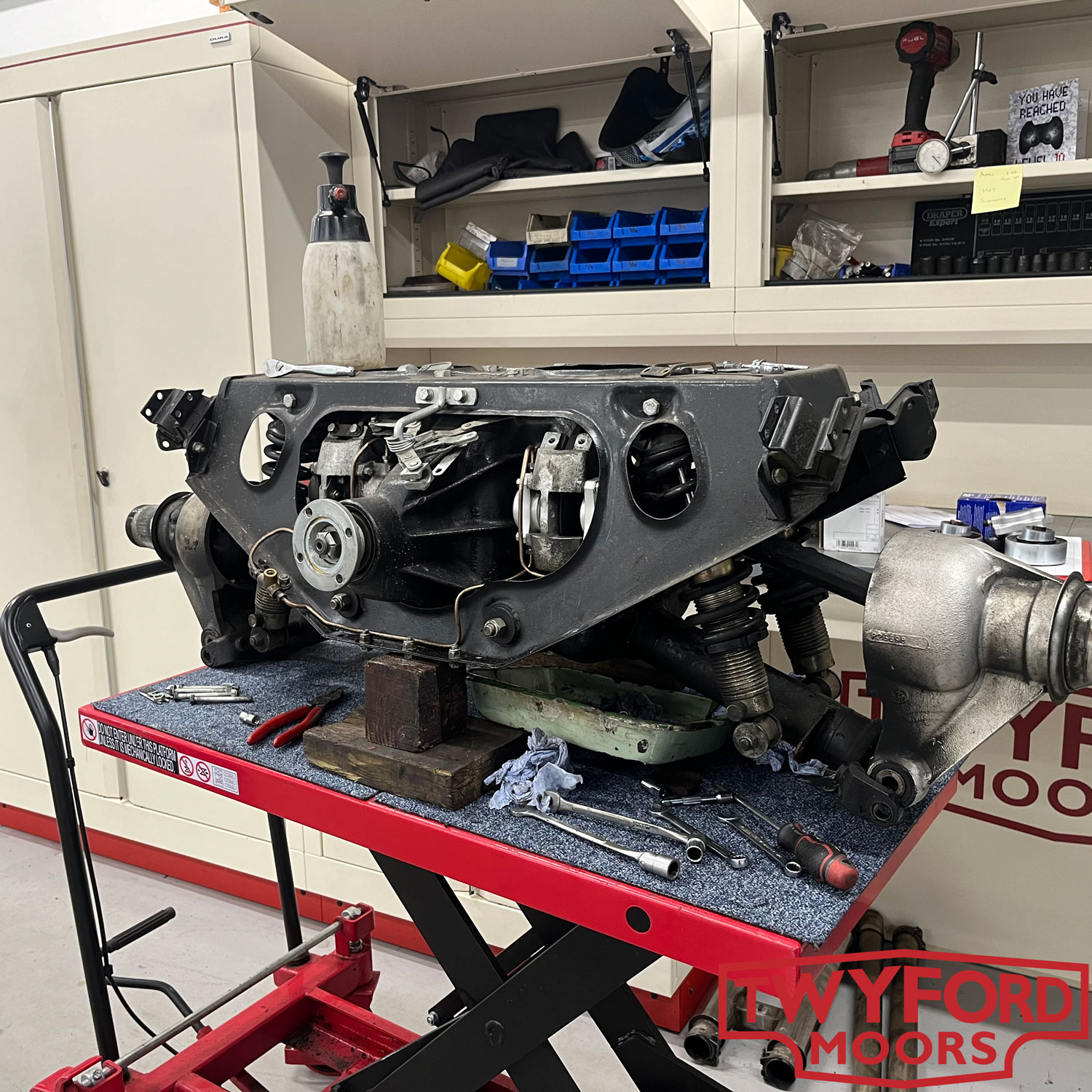
Jaguar XJS Convertible
The XJS pictured here has come over to us from the continent for a service, check over, and to investigate a noise from the drive train. It is without a doubt one of the best and most original examples we have seen. The XJS is not famed for lasting well; many of the cars suffered as they are not easy cars to maintain, and for a time, values were very low. It seems that people are now recognizing how good these cars are, and the values have gone up a bit. Personally, I think they have aged very well and make a very practical classic car.
This car has relatively low mileage and spent most of its life in Italy. One imagines the warm climate has helped preserve this car. That being said, it is evident that it has been very well maintained over the years. The condition of the car is a testament to both the owner for looking after it and the mechanics who have maintained it over the years.
It is a pleasure to be entrusted with such a car and to keep it in top condition for another chapter of its story. With all the jobs attended to, it is now ready to head back to mainland Europe for a season of driving.
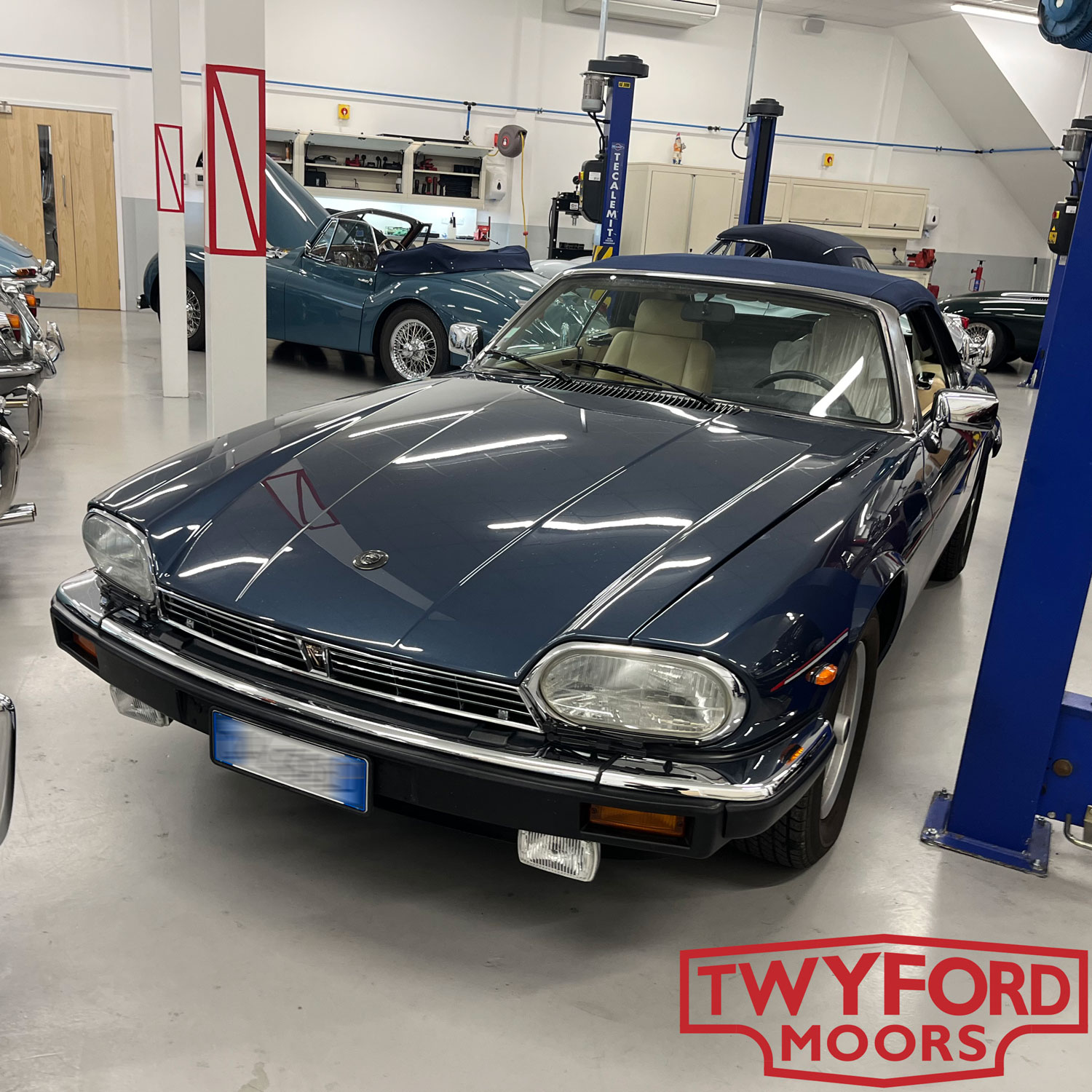
SS Cars
We are looking after an increasing number of SS Cars, which were produced before WW2. Jaguar can trace its roots back to Swallow Sidecars, founded in 1922 by William Walmsley and William Lyons. They started off building motorcycle sidecars, and in 1927 started coachbuilding bodies. Their early cars were built on Austin 7 chassis, but they increasingly worked with Standard. By 1934, they were ready to start producing their own cars and founded SS Cars. Their focus was on making beautifully styled cars at a price that people could afford. The early cars, which used engines and chassis supplied by Standard, were criticized at the time for being “more show than go.”
To address the performance issue, SS developed their own cylinder heads, which released much more power from Standard’s straight six engines. The cars which received this engine were branded as SS Jaguar. Principally, these were the SS100 sports cars. Launched in 1936, the SS Jaguar 100 is really the genesis of the Jaguar brand as we know it, offering styling and performance at an affordable price.
Production of SS cars stopped in 1940 due to the war, and after the war, the SS brand did not seem very appealing for obvious reasons. Fortunately, the Jaguar name was already there and associated with the brand. The rest, as they say, is history.
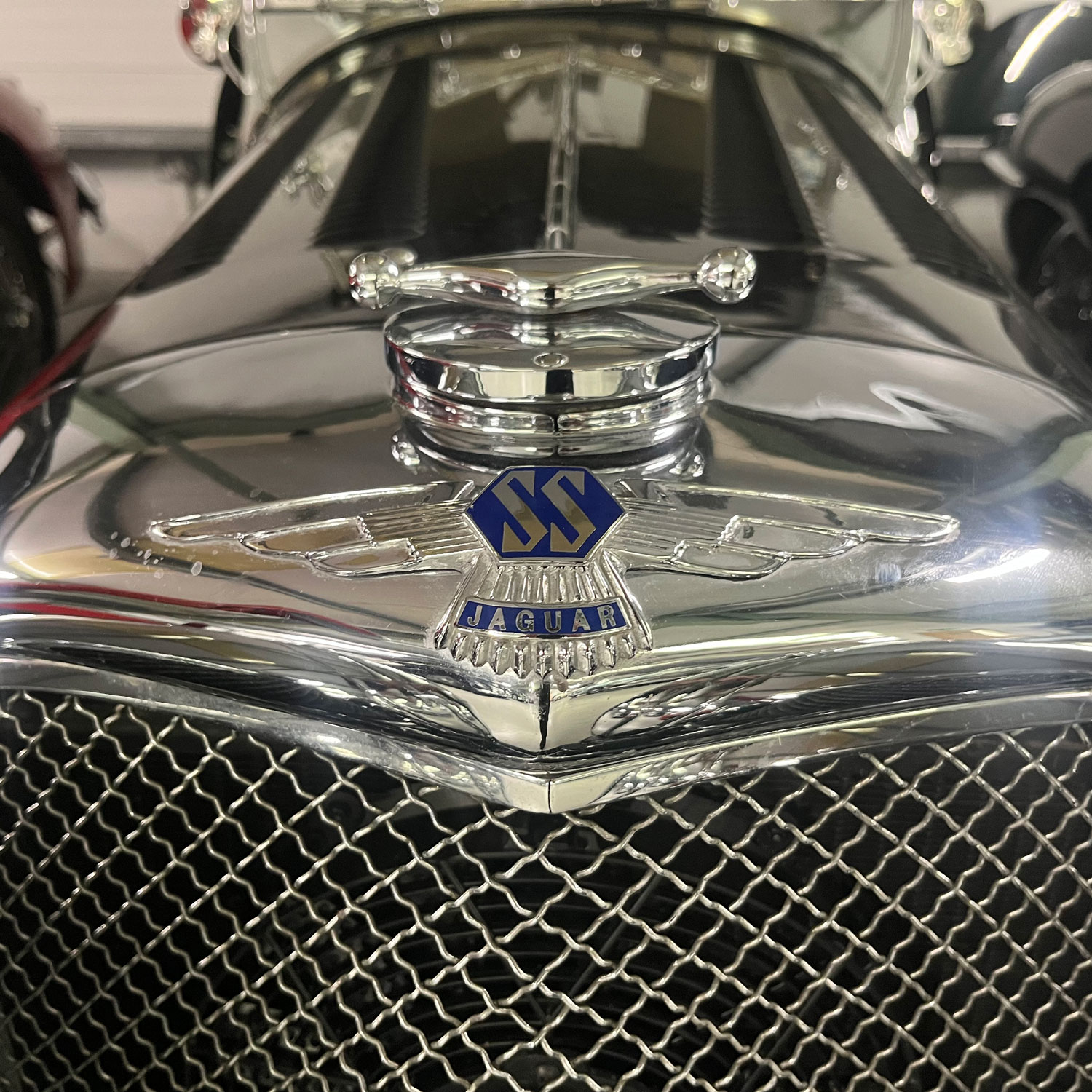
Jaguar XK140 Electrical Fault
This Jaguar XK140 was restored by us back in 2012. It has returned to us annually for servicing and has covered many miles up and down the country. From classic car shows to tours, this car has been all over the place. It is back with us due to a rather unusual electrical fault. Under normal driving conditions, everything worked fine, but as you approached a junction and switched on the indicators, the radio would turn off. Unfortunately, this wouldn’t happen every single time. The radio fitted to the car was a modern Alpine unit hidden behind the original dashboard drawer front.
This kind of intermittent fault can be very challenging to replicate, let alone find and fix. Indeed, when a fault is intermittent, it can be hard to be sure you have fixed it even once you have a good theory as to the nature of the fault.
After much investigation and ruling out potential faults in the car's wiring or with the indicators, we found that the fault actually lay with the radio unit itself. Being 12 years old, it seemed like a good time to upgrade the radio, so it is now fitted with a nice new DAB radio with Bluetooth connectivity and, most importantly, stays on when you indicate.
